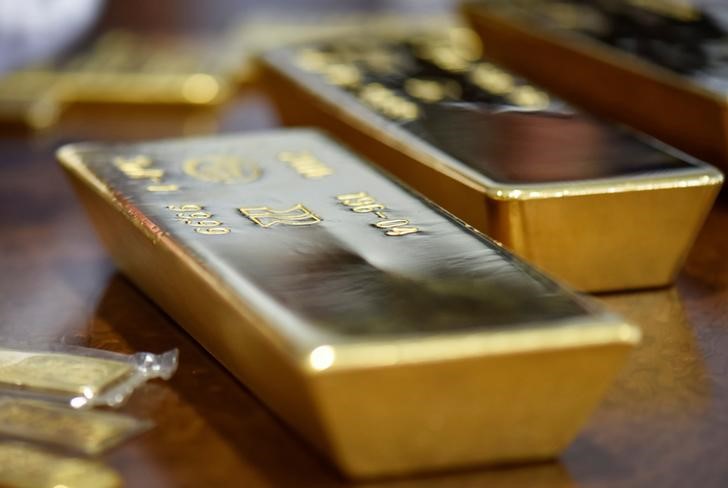Investing.com – Gold rebounded on Friday from a six-week low, but ended September with a sixth-straight monthly drop, marking its longest losing streak in 21 years after the Federal Reserve’s latest rate hike and plans for more monetary tightening.
Gold futures for December delivery were up 0.7%, or $8.50, at $1,195.90 a troy ounce by 2:06 PM ET (17:34 GMT) on the Comex division of the New York Mercantile Exchange. It settled the official session up $8.80 at $1,196.20, Comex data showed.
For September, though, the market was down about 1.6% for its sixth-straight monthly drop and the longest losing streak since January 1997.
Friday's high of $1,197.30 on the Comex also fell short of the $1,200 level held by the precious metal before the Fed raised rates on Wednesday for the third time this year. Earlier in the session, the market fell to a six-week low of $1,184.40.
Analysts said gold’s recovery on the day was partly aided by buying from central banks looking for hedging options after Italy’s large budget deficit raised contagion fears in the eurozone.
“There was a strong push toward gold by cenbanks today because of Italy,” said George Gero, managing director and precious metals analyst for RBC Wealth Management in New York. “But the headwinds from the Fed are still there, so you’ll likely see continued pressure for gold and probably real relief only when commodity inflation picks up again next year.”
The U.S. dollar index, which measures the greenback’s strength against a basket of six major currencies, was up 0.1% at 94.72 after hitting a two-week high earlier at 94.98 on the back of the monetary tightening announced by the Fed this week.
Gold usually falls as the dollar rises, as it is denominated in the U.S. currency and is sensitive to moves in the dollar.
The Fed added a quarter point on Wednesday to bring U.S. interest rates to a range of 2.00% to 2.25%. The central bank indicated another increase in December, followed by three more in 2019 and one in 2020.
Data on Friday showed consumer spending in the U.S. rose as expected in August, although slightly lower than the prior month.
In other data, the Federal Reserve's preferred inflation measure, the core personal consumption expenditures (PCE) index, which excludes food and energy, was flat in August, staying at 2% after rising the prior month.
Elsewhere in metals trading, December silver was up 2.9% at $14.705 an ounce, while January platinum rose by 0.9% to $821.70. December palladium slid 0.3% to $1,068.
Among base metals, December copper rose 0.9% to $2.804 a pound.
